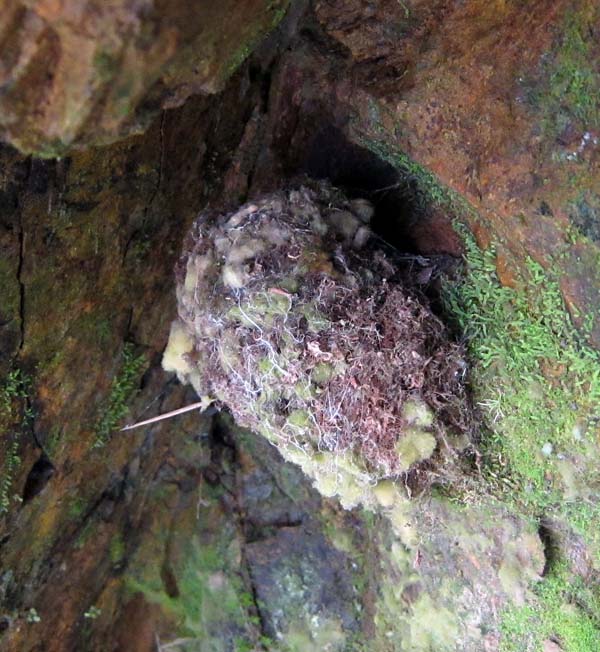San Pedro – Manu’s Middle Elevation Cloud Forests
In this blog I’m revisiting my travels here in September and October of the past two years…and in the process boning up for my return in October of this year.
Like any road that descends the wet, eastern slope of the Andes, the Manu Road’s diversity begins to explode as you approach the Amazonian lowlands. Here in the middle elevations, you can see this already in the amazing bird, animal and plant life in the area known as San Pedro.
The exact climatic and vegetation zones transition very abruptly on these steep slopes, varying with elevation, exposure, soil type, and history of human use, and the frequent result in many bird distributions is reflected in their narrow, strip-like shapes in the field guide maps. You must stop frequently along the road in order to hope for a good coverage of all the minute habitat types and species diversity.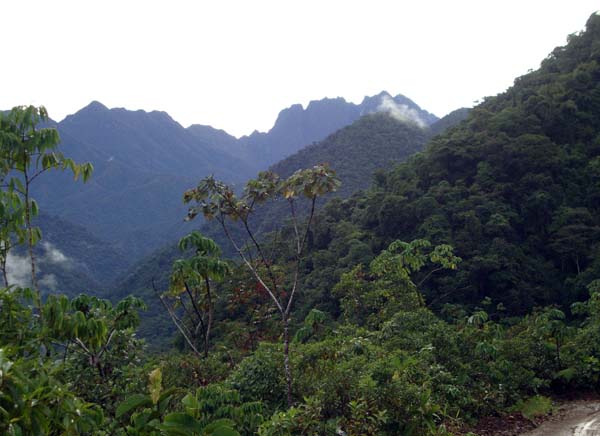
And diversity there is. For those who notice plants, some eye candy in this zone include the unusual bromeliad Pitcairnia…
…this fancy member of the caper family Capparidaceae…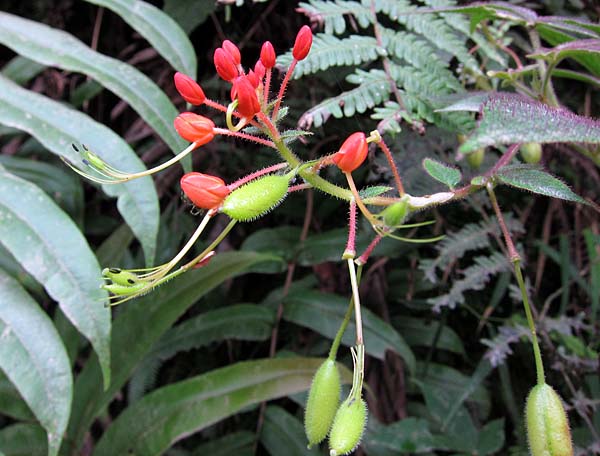
and this Gurania species, a surprisingly colorful member of the cucumber family.
This high diversity of plants is directly reflected in the high diversity of other life forms, such as the birds. There are exciting mixed flocks in this region, but since my photos have been limited to digiscopable subjects, I have only nice, large sitting things such as this Double-toothed Kite to show.
Or this roosting female Lyre-tailed Nightjar.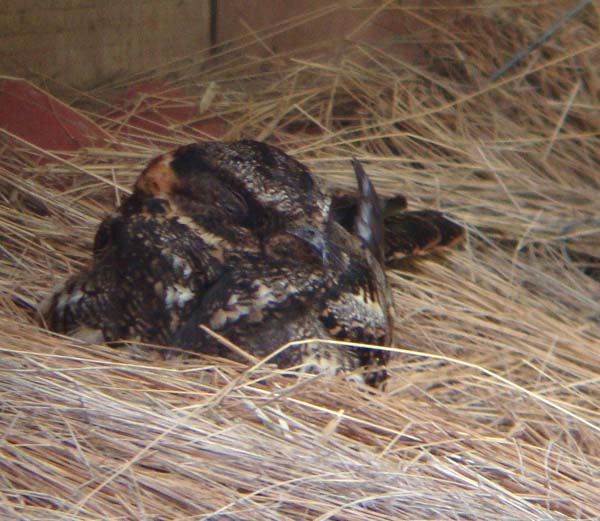
Missable is the stunning Versicolored Barbet, but we saw multiples every day on my tour here last year.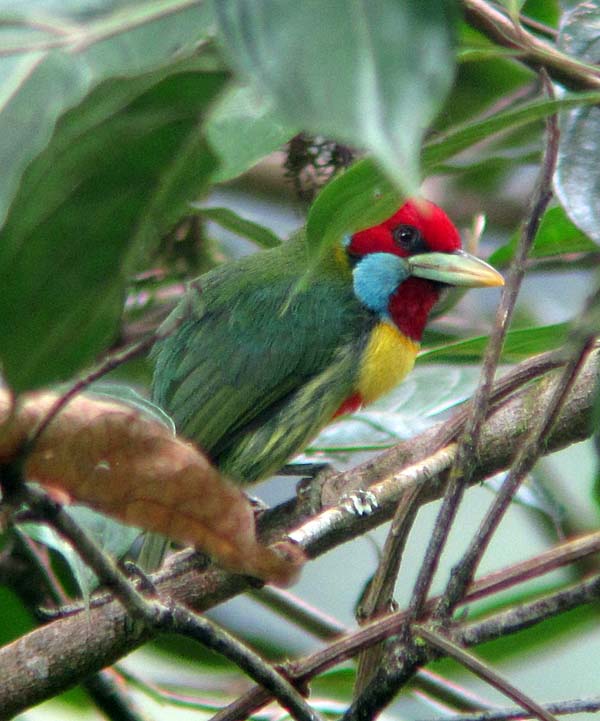
The mixed flocks can be exciting, with many species of colorful tanagers and rarities such as the Yellow-rumped Antwren. Someday we’ll get lucky and see the mysterious yellow bird first discovered by Gary Rosenberg and Dan Lane. It’s mysterious because it’s seen only very rarely, it still has no name, and doesn’t even have a certain familial placement.
We spend three nights here on my tours, usually based in the Cock-of-the-rock Lodge, though there are other options nearby.
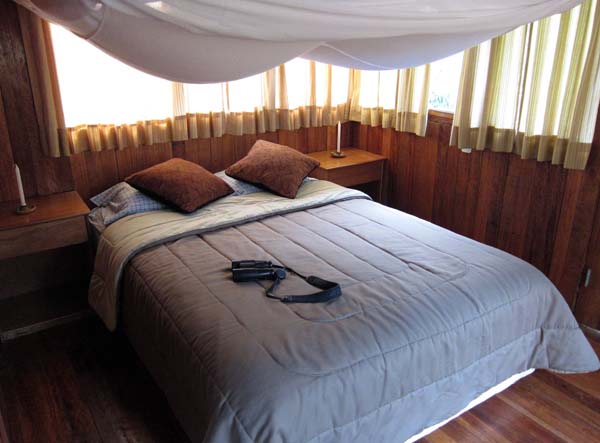
And when there’s a lull in the birding, we look at other stuff. Such as this orchid bee visiting the porterweed in our hotel’s garden. (This flower is also great for hummingbirds – last year we saw Wire-crested Thorntail, Rufous-crested Coquette, Speckled Hummingbird, and the enigmatic Wedge-billed Hummingbird at it.)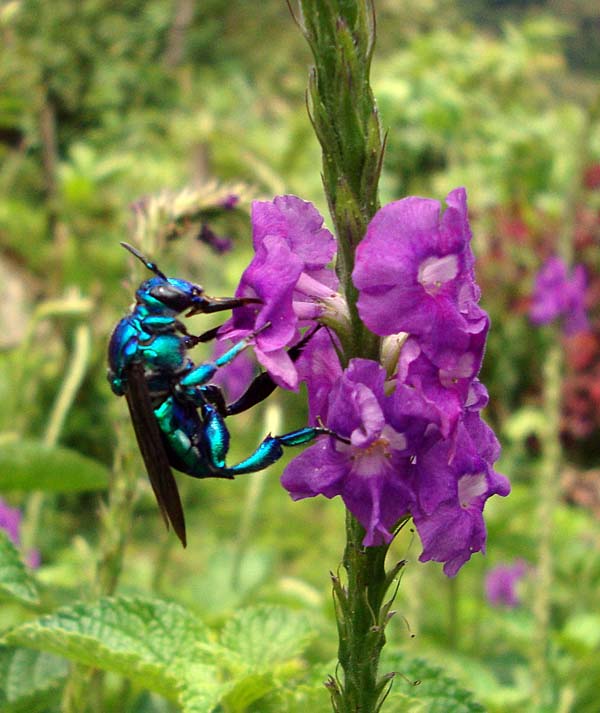
At night, moths, such as this geometer (inchworm) Pantherodes unciaria gather on the walls of the lodge.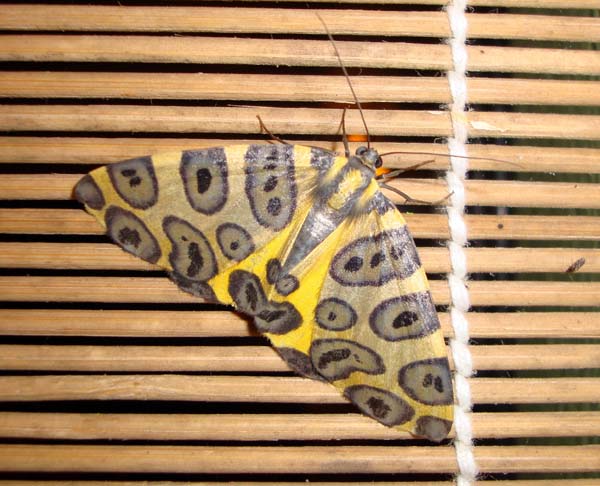
On the lodge grounds one day was this Bare-tailed Woolly Mouse-Opossum.
While in a stream down the road was this aquatic lizard, Potamites juruazensis.
But we always return to the birds when they show up. Last fall, I saw a hummer zip across in front of our bus, and our driver was quick to pull over as soon as he could. We walked back to have fantastic views of a Green-fronted Lancebill and also discovered her nest with two eggs under a cliff overhang.